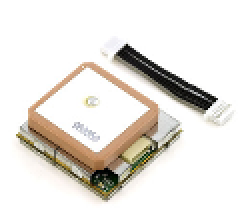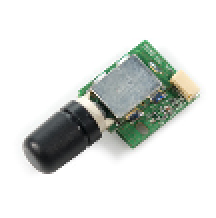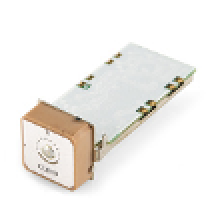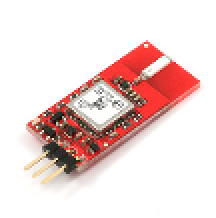Hardware Reference
In-Depth Information
When you run this sketch, it may take several
minutes before you get a position. Different
receivers take varying times to acquire an initial
position when first started, or when moved to a new place
on the planet. So, pick a spot with a clear view of the skies
and be patient. Pay attention to the number of satellites in
view as well. If that number is less than four, your receiv-
er's not going to acquire a position too well. Satellites
move, though, so if you don't get anything, wait a half-hour
or so and try again.
GPS and cellular location tracking together. So, even if
they don't have enough satellite signals, they can generally
determine their position relative to the nearest cell towers,
and—using the known locations of those towers—approxi-
mate a fix.
NMEA 0183 is just one of many protocols used in mapping
GPS data. You'll learn about a few more, as well as some
tools for using them to map routes and locations, in
Chapter 11. The great thing about NMEA, though, is that
it's nearly ubiquitous among GPS receivers. No matter
what other protocols they use, they all seem to have NMEA
as an option. So it's a good one to know about no matter
what GPS tools you're working with.
X
Many mobile phones on the market these days feature a
GPS receiver, and seem to have a signal most of the time,
which may make you wonder why your receiver can't get a
signal as fast. Remember, mobile phones tend to use both
Choosing Which GPS Accessories to Buy
There are many GPS receiver modules on the market, and
it can get confusing choosing the right tools for this job.
Here are a few things to consider.
receiver mentioned in this project because it gets good
reception, acquires a fix fast, and has been the most reliable
compared to others I've tested. There are other good ones,
though. Spark Fun has a nice GPS receiver buying guide on
their site.
Most common GPS receivers communicate with the
microcontroller via TTL serial, using the NMEA 0183
protocol. So when it comes to connecting them to your
microcontroller, and reading their data, they're largely
interchangeable. The big difference between them is how
well they receive a GPS signal, which is influenced by how
many channels they receive (generally more is better),
what kind of antenna they have (generally larger is better),
and how much power they consume. I prefer the EM-406a
To connect a GPS receiver, all you need is a serial transmit
connection, power, and ground. There are some shields
available that allow you to mount a receiver to your Arduino,
but they're optional. You need only three wires.
Images courtesy of Spark Fun. Thanks to the students of
2011's Wildlife Tracking class for confirming my tests.
X
EM-406a GPS receiver.
20 channels, good
reception, less expensive
than other alternatives.
D2523T GPS receiver.
50 channels, great
reception, but more
expensive.
LS20126 receiver. Has a
very small antenna, but
works decently in open
areas.
GPS MiniMod with GR10/
MN1010 receiver. Smallest
I could find. Takes a long
time to acquire a signal.












